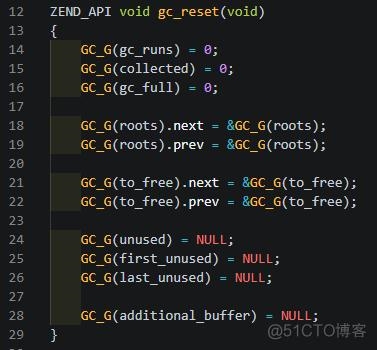 电势电流曲线和浓度分布(i"/>
电势电流曲线和浓度分布(i"/>
恒电势电流曲线和浓度分布(i
Test condition
- No stirring;
- The concentration of reactant at the electrode surface is always 0.
Half reaction:
O+ne→R(a) (a) O + n e → R
The equation of the limiting current versus concentration will be
∂CO∂t=DO∂2CO∂x2(1) (1) ∂ C O ∂ t = D O ∂ 2 C O ∂ x 2
Initial condition:(Concentration is homogeneous)
CO(x,0)=C∗O(2) (2) C O ( x , 0 ) = C O ∗
Boundary conditions:
CO(∞,t)=C∗O(3) (3) C O ( ∞ , t ) = C O ∗
CO(0,t)=0(t>0)(4) (4) C O ( 0 , t ) = 0 ( t > 0 )
Apply Laplace transform to solve Eq.(1)
Laplace transform function
Apply Laplace transform on the left part of Eq(1)
L{∂CO∂t}=∫∞0∂CO∂te−stdt=COe−st∣∣∣∞0+s∫∞0COe−stdt=CO(x,∞)e−s∞−CO(x,0)e0+s∫∞0COe−stdt=−C∗O+s∫∞0COe−stdt(6) L { ∂ C O ∂ t } = ∫ 0 ∞ ∂ C O ∂ t e − s t d t = C O e − s t | 0 ∞ + s ∫ 0 ∞ C O e − s t d t = C O ( x , ∞ ) e − s ∞ − C O ( x , 0 ) e 0 + s ∫ 0 ∞ C O e − s t d t (6) = − C O ∗ + s ∫ 0 ∞ C O e − s t d t
Define
C¯¯¯¯O(x,s)=∫∞0COe−stdt(7) (7) C ¯ O ( x , s ) = ∫ 0 ∞ C O e − s t d t
L{DO∂2CO∂x2}=∫∞0DO∂2CO∂x2e−stdt=DO∂2∂x2∫∞0COe−stdt=DO∂2C¯¯¯¯O(x,s)∂x2(8) L { D O ∂ 2 C O ∂ x 2 } = ∫ 0 ∞ D O ∂ 2 C O ∂ x 2 e − s t d t = D O ∂ 2 ∂ x 2 ∫ 0 ∞ C O e − s t d t (8) = D O ∂ 2 C ¯ O ( x , s ) ∂ x 2
After Laplace transform, Eq(1) becomes
sC¯¯¯¯O(x,s)=DO∂2C¯¯¯¯O(x,s)∂x2+C∗O(9) (9) s C ¯ O ( x , s ) = D O ∂ 2 C ¯ O ( x , s ) ∂ x 2 + C O ∗
The solution of the ODE is:
C¯¯¯¯O(x,s)=A1expsDO−−−−√x+A2exp(−sDO−−−−√x)+A3(10) (10) C ¯ O ( x , s ) = A 1 exp s D O x + A 2 exp ( − s D O x ) + A 3
where A1 A 1 , A2 A 2 and A3 A 3 are constant.
Apply Laplace transform on boundary conditions, the we can get C¯¯¯¯O(∞,s)=C∗Os(11) (11) C ¯ O ( ∞ , s ) = C O ∗ s
C¯¯¯¯O(0,s)=0(12) (12) C ¯ O ( 0 , s ) = 0
After substitution, we can solve
A1=0(13) (13) A 1 = 0
A2=−C∗Os(14) (14) A 2 = − C O ∗ s
A3=C∗Os(15) (15) A 3 = C O ∗ s
Hence the solution should be C¯¯¯¯O(x,s)=−C∗Osexp(−sDO−−−−√x)+C∗Os(16) (16) C ¯ O ( x , s ) = − C O ∗ s exp ( − s D O x ) + C O ∗ s
Current-time profile
It is known that the flux at the electrode surface is proportional to the current, we can get the current
Applying the Laplace transform on Eq(17) gives
i¯(t)nFA=DO∂C¯¯¯¯O(x,s)∂x∣∣∣x=0(18) (18) i ¯ ( t ) n F A = D O ∂ C ¯ O ( x , s ) ∂ x | x = 0
Substitution of Eq (16) into Eq (18) gives i¯(s)nFA=DOC∗OssDO−−−−√exp(−sDO−−−−√)x∣∣∣x=0(19) (19) i ¯ ( s ) n F A = D O C O ∗ s s D O exp ( − s D O ) x | x = 0
it becomes i¯(s)nFA=DOC∗OssDO−−−−√=C∗ODOs−−−−√(20) (20) i ¯ ( s ) n F A = D O C O ∗ s s D O = C O ∗ D O s
It yields
i¯(s)=nFAD1/2OC∗Os1/2(21) (21) i ¯ ( s ) = n F A D O 1 / 2 C O ∗ s 1 / 2
applying the form
L−1{1s√}=L−1{1π−−√⋅π−−√20s√}=1π−−√L−1{π−−√20s√}(22) L − 1 { 1 s } = L − 1 { 1 π ⋅ π 2 0 s } (22) = 1 π L − 1 { π 2 0 s }
use Inverse Laplace Transform table
L−1{(2n−1)!π−−√2nsn+1/2}=tn−1/2(23) (23) L − 1 { ( 2 n − 1 ) ! π 2 n s n + 1 / 2 } = t n − 1 / 2
L−1{1s√}=πt−−√(24) (24) L − 1 { 1 s } = π t
so the applying the inverse Laplace transform on Eq(21) gives
which is called Cottrell equation
Concentration-distance profile
Applying Inverse Laplace transform on Eq(16) gives
or
CO(x,t)C∗O=1−erfcx2DOt−−−−√=erfx2DOt−−−−√(27) (27) C O ( x , t ) C O ∗ = 1 − e r f c x 2 D O t = e r f x 2 D O t
更多推荐
恒电势电流曲线和浓度分布(i












发布评论